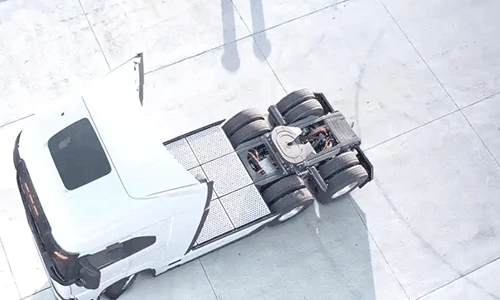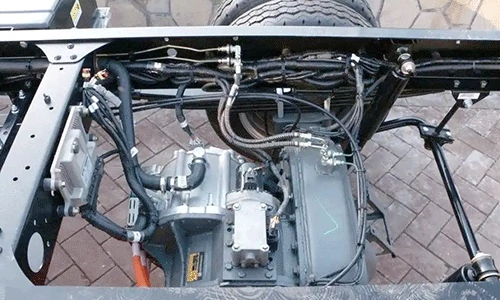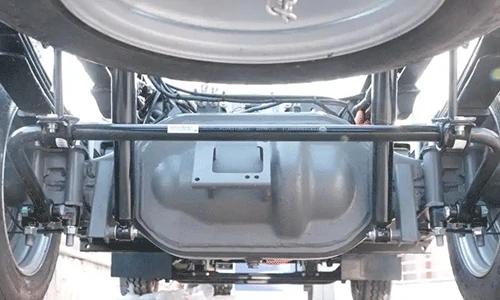As the layout of automobile parts gradually changes from decentralized to centralized, electric drive axles have improved efficiency and reduced energy consumption by simplifying the structure, becoming the dominant direction of pure electric truck development. Due to its unique structure, electric drive axles do not require a gearbox when pure electric vehicles are driving, thereby reducing the loss in the process of kinetic energy transmission. Therefore, the industry generally predicts that the combination of motors and electric drive axles and distributed electric drive technology will become the dominant development direction of pure electric trucks in the future.

Distributed drive technology
In the field of new energy commercial vehicles, common types of electric drive systems include central drive, electric drive axles and distributed drive. Among them, the layout of the central drive is similar to that of traditional automotive powertrains. It replaces traditional engines and transmissions by integrating drive motors and transmissions. The integrated electric drive axles are divided into three types: parallel axis, coaxial and vertical axis. This design can effectively combine traditional drive axles with motors and transmissions.
Distributed drive uses wheel edge or wheel hub design to improve the maneuverability and efficiency of the vehicle, although the cost and application environment are challenging. In addition, the distributed drive adopts wheel-side or wheel-hub drive mode, and its motor is located on both sides of the bridge, making the vehicle more maneuverable and more efficient. However, due to its high cost and certain difficulties in the application environment, it is currently mainly used in buses and high-end models.
This technology is gradually becoming a new direction for the technical upgrade of new energy commercial vehicles with its high efficiency, low energy consumption and lightweight characteristics.


Future Outlook and Potential Challenges
Electric drive axle technology has great potential in the future, but challenges such as heat dissipation and noise need to be overcome to achieve larger-scale application. In summary, the distributed electric drive axle, with its single wheel independent drive characteristics, makes various drive forms such as front drive, rear drive and four-wheel drive feasible.
With the advancement of technology and the active layout of major companies, electric drive axles and distributed drive technologies will play an important role in the future pure electric truck market. Despite the challenges, its development potential should not be underestimated.


